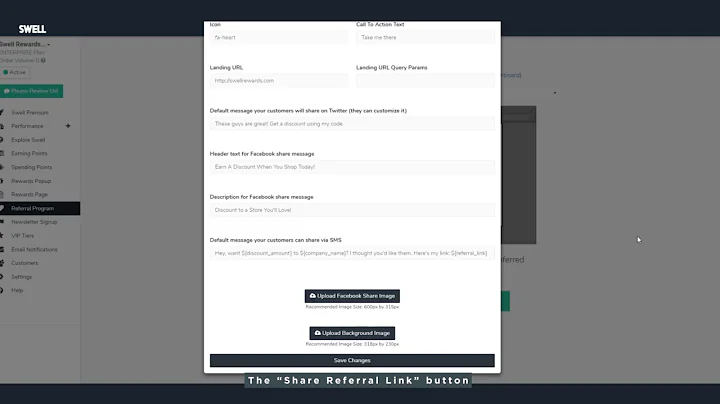Klaviyo IPO Filing: What it Means for Tech IPOs and the Grocery Delivery Market
Table of Contents:
- Introduction
- Clavio's IPO Filing
- The Significance of Clavio's Filing
- Comparison with Other IPOs
- Instacart's Valuation and Financials
- The Economics behind Instacart
- Instacart's Advertising Business
- Average Order Size and Unit Economics
- Competitors in the Grocery Delivery Space
- Sustainability and Competition for Instacart
- The Role of Costco in Instacart's Business
- The Outlook for Instacart's IPO
1. Introduction
Welcome back! In this article, we will be discussing the recent IPO filing of marketing platform Clavio and its potential implications for the tech IPO space. We will also delve into the valuation and financials of grocery delivery giant Instacart, exploring its unique position in the market and the challenges it faces. So, let's dive in and explore the exciting world of tech IPOs and the dynamics of the grocery delivery industry.
2. Clavio's IPO Filing
Clavio, a software company that assists marketers, has recently filed to go public. With an expected valuation of around $9.5 billion, Clavio's IPO is generating significant buzz. The company boasts impressive revenue growth and net revenue retention rates, which contribute to narrowing losses. However, considering the performance of other IPOs in recent years, it remains to be seen how investors will receive Clavio's financials.
3. The Significance of Clavio's Filing
The filing of Clavio's IPO holds significance in the tech IPO space. As other companies in the pipeline observe Clavio's journey, they may gain insights and inspiration from its success. Though Instacart's IPO is anticipated, questions arise regarding the valuation, given the recent mark-down from $39 billion to $13 billion. Investors and industry insiders will closely analyze Clavio's financials to gauge market sentiment and investor appetite.
4. Comparison with Other IPOs
Clavio differentiates itself from other companies in the IPO pipeline due to its unique position in the market. While the buzz primarily revolves around Instacart, Clavio's business model may garner more support due to its relevance to various industries. The differentiation might provide Clavio with a favorable tailwind as the IPO market gradually returns to normalcy after the boom cycle.
5. Instacart's Valuation and Financials
Instacart is set to make a significant impact on the IPO market, given its previous valuation of $39 billion and subsequent mark-down to $13 billion. Understanding its financials becomes crucial to determine whether the valuation can be justified in the current market environment. Investors will closely scrutinize the company's financial performance, challenging the sustainability of gig economy companies that are yet to turn a profit.
6. The Economics behind Instacart
The economics of gig economy companies like Instacart have been a subject of debate. While the unit economics of delivery-based businesses are improving, the sector as a whole continues to operate at a loss. Instacart, however, stands apart with its substantial advertising business, which offers better profit margins compared to its core grocery delivery operations. This unique dynamic sets Instacart apart from other players in the market.
7. Instacart's Advertising Business
Instacart's advertising business is a vital component of its revenue stream. Similar to how Amazon Web Services (AWS) fuels profitability for Amazon, advertising provides a higher-margin avenue for Instacart. Grocery delivery, on the other hand, is known for its lower profitability. As investors evaluate Instacart's IPO, the performance and potential of its advertising segment will be a crucial factor to consider.
8. Average Order Size and Unit Economics
Instacart's average order size, or basket, plays a significant role in its profitability. The company's larger basket sizes, with an average of over $75, contribute to improved unit economics and profitability. This characteristic distinguishes Instacart from competitors like Uber and DoorDash, which are entering the grocery delivery space to tap into the higher revenue potential offered by larger baskets.
9. Competitors in the Grocery Delivery Space
While Instacart was once the dominant player in the grocery delivery market, it now faces fierce competition from well-capitalized players like Walmart and Target. These retail giants have established their own grocery delivery services to capture a share of the growing market. Instacart's margins and dominance have likely been affected by this increased competition, requiring the company to strategize accordingly.
10. Sustainability and Competition for Instacart
As the grocery delivery space becomes more crowded, sustainability becomes a critical factor for Instacart. Competing against powerful players like Walmart and Target, Instacart must leverage its strengths to maintain its position. The company's ability to adapt to market dynamics and capitalize on its key differentiators, such as advertising revenue and larger basket sizes, will likely determine its long-term success.
11. The Role of Costco in Instacart's Business
Costco plays a significant role in Instacart's sustainable demand. Previously, shopping at Costco required a membership card, but Instacart's partnership now enables non-members to have access to Costco's offerings. Additionally, even Costco members can enjoy the convenience of Instacart's delivery service, which offers a more cost-effective option. This collaboration has likely contributed to Instacart's revenue growth and sustained demand.
12. The Outlook for Instacart's IPO
As we await Instacart's IPO, confidence and caution coexist. On one hand, the timing of Instacart's listing suggests that bankers are optimistic about the market's readiness for new issues. On the other hand, recent high-profile blowups in SPAC listings, like better.com, have highlighted the need for cautious pricing and realistic expectations. The success of Instacart's IPO will be closely watched, reflecting both the strength of the company and the overall IPO market sentiment.
Highlights:
- Clavio, a marketing platform, has recently filed for an IPO with an expected valuation of $9.5 billion.
- Instacart's valuation has decreased from $39 billion to $13 billion, raising questions about its upcoming IPO.
- Instacart has a substantial advertising business that offers better profit margins compared to its core grocery delivery operations.
- The average order size, or basket, plays a significant role in Instacart's profitability.
- Instacart faces fierce competition from well-capitalized players like Walmart and Target in the grocery delivery industry.
FAQ:
Q: How does Instacart's valuation compare to its previous funding rounds?
A: Instacart's valuation has decreased from $39 billion in its last private round to $13 billion.
Q: What sets Instacart apart from other players in the grocery delivery market?
A: Instacart differentiates itself with its substantial advertising business that offers better profit margins compared to its core grocery delivery operations.
Q: Who are Instacart's main competitors in the grocery delivery space?
A: Instacart faces competition from well-capitalized players like Walmart and Target, who have established their own grocery delivery services.
Q: What factors contribute to Instacart's profitability?
A: Instacart's profitability is influenced by its larger average order size, or basket, which leads to improved unit economics. Additionally, its advertising business contributes to higher profit margins.
Q: How has Instacart's partnership with Costco impacted its business?
A: Instacart's partnership with Costco has expanded its customer base by allowing non-members to access Costco's offerings. It has also provided a more cost-effective delivery option for Costco members.
Q: What challenges does Instacart face in terms of sustainability?
A: Increased competition from players like Walmart and Target poses a challenge to Instacart's sustainability in the grocery delivery market. The company must leverage its strengths and adapt to market dynamics to remain competitive.






















